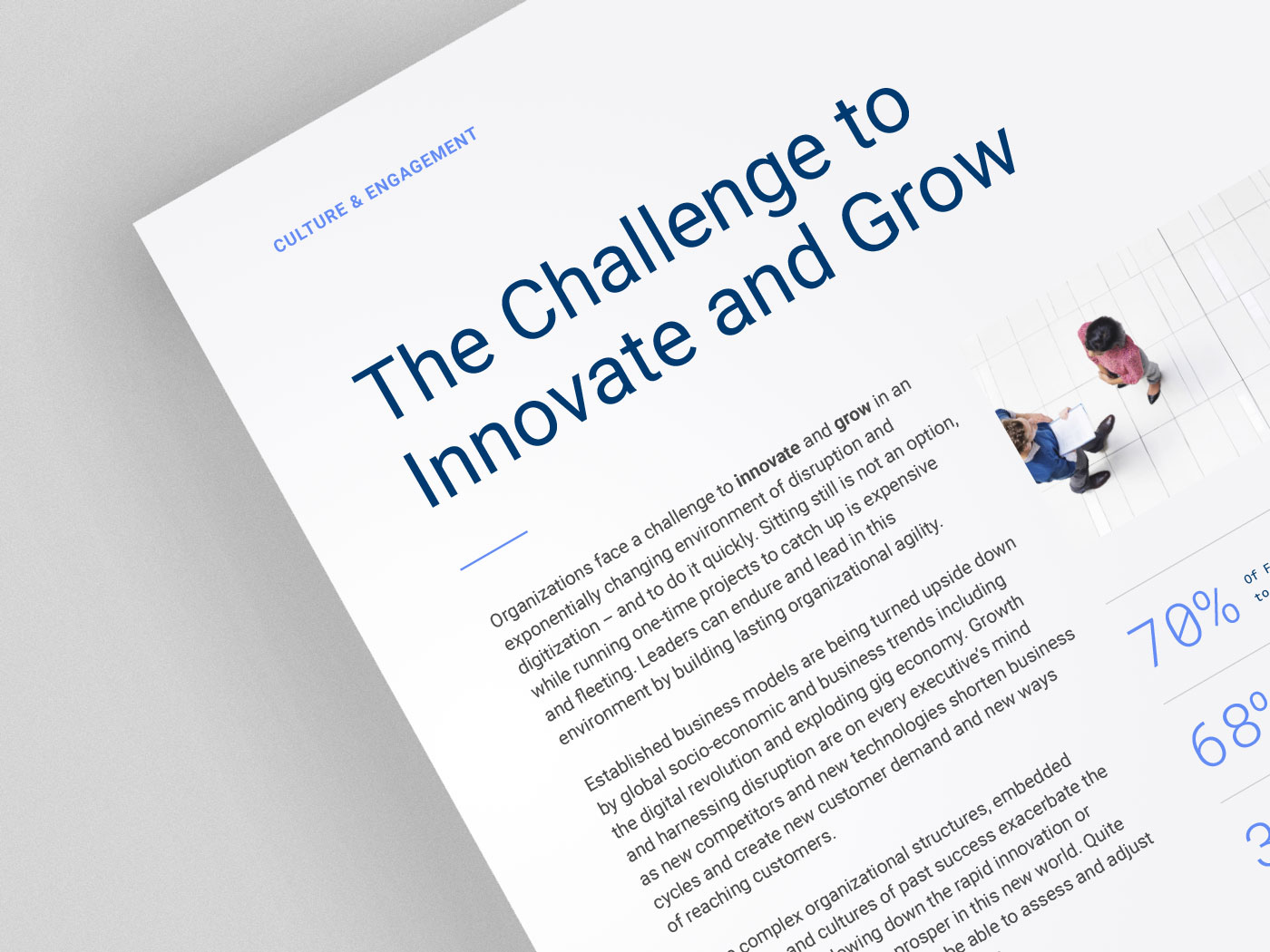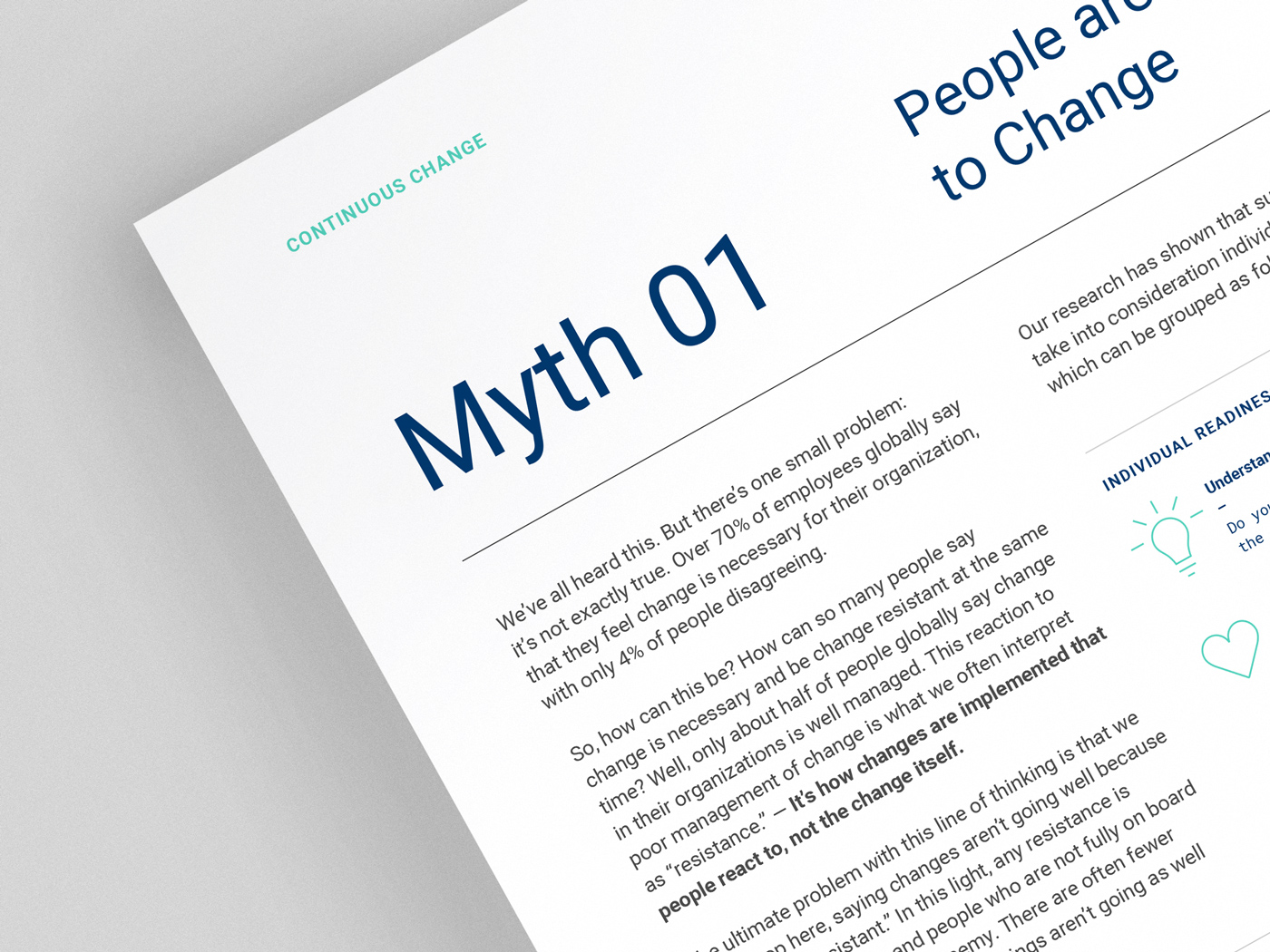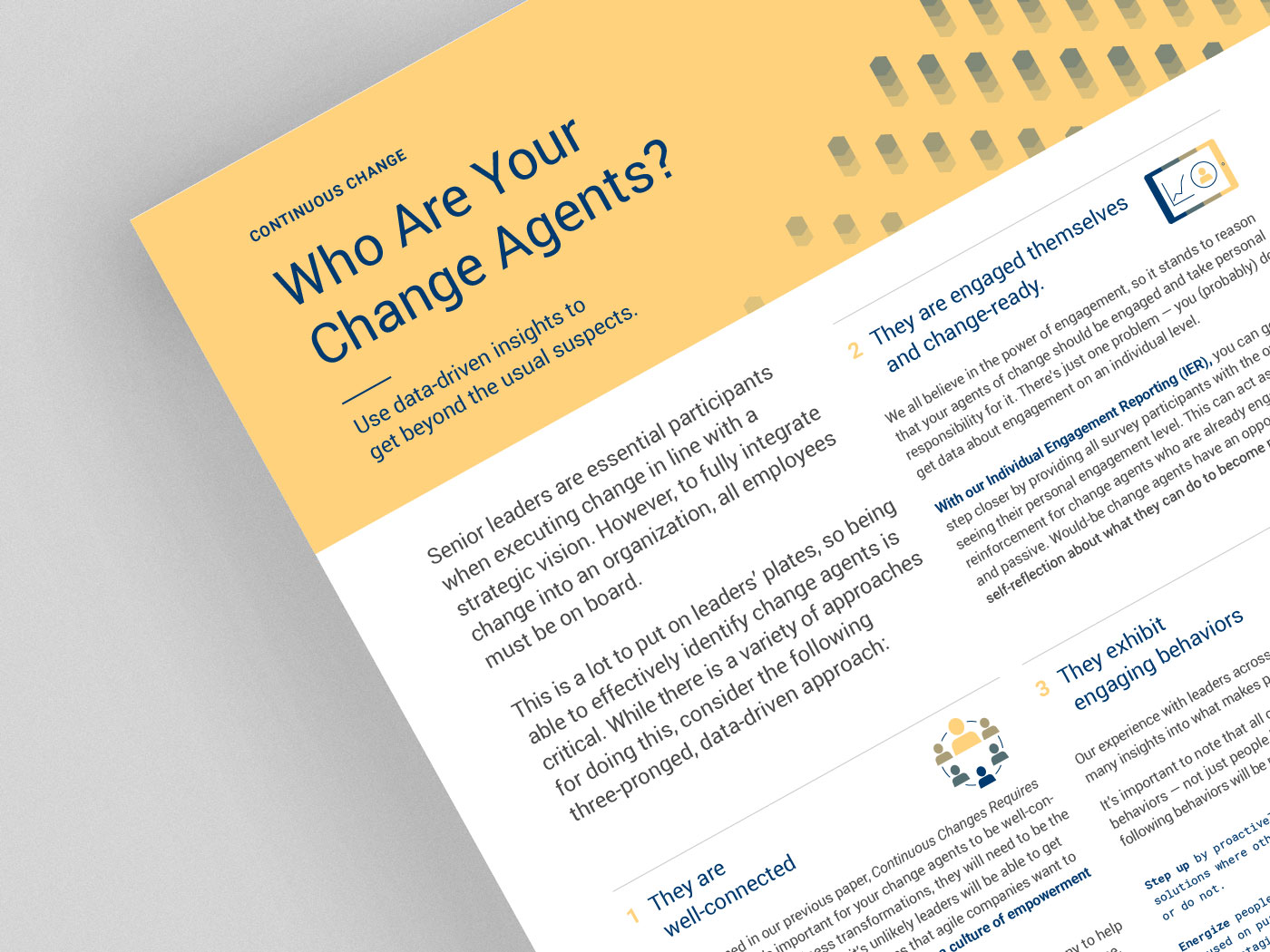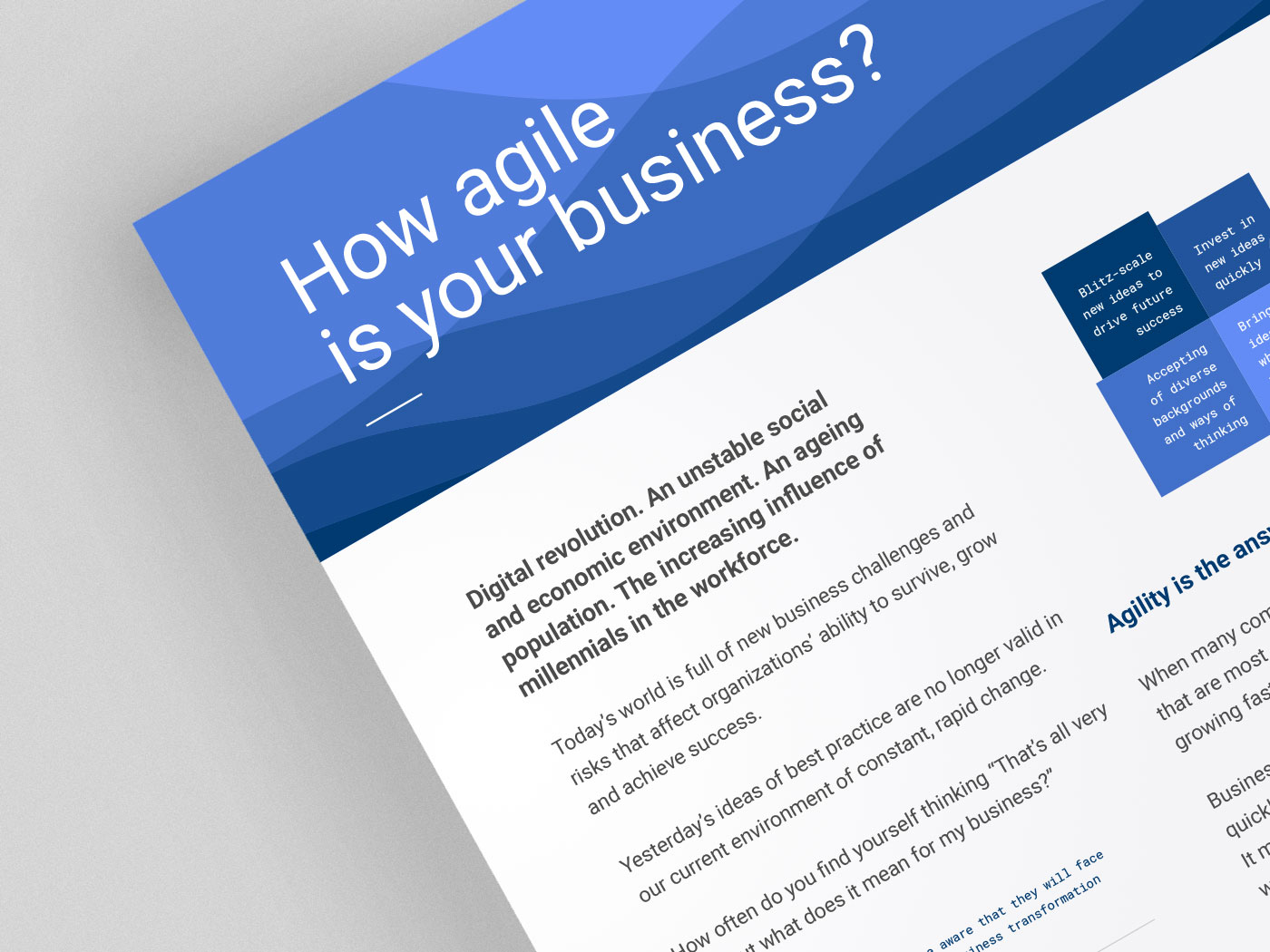
Organizations face a challenge to innovate and grow in an exponentially changing environment of disruption and digitization – and to do it quickly. Sitting still is not an option, while running one-time projects to catch up is expensive and fleeting. Leaders can endure and lead in this environment by building lasting organizational agility.
Established business models are being turned upside down by global socio-economic and business trends including the digital revolution and exploding gig economy. Growth and harnessing disruption are on every executive’s mind as new competitors and new technologies shorten business cycles and create new customer demand and new ways of reaching customers.
Large complex organizational structures, embedded processes and cultures of past success exacerbate the challenges by slowing down the rapid innovation or reinvention needed to prosper in this new world. Quite simply, organizations must be able to assess and adjust more quickly if they are to survive.
Companies with top quartile levels of organizational agility have more than double the three-year average growth rate of the average organization (15%2 vs 7%). “Agile” techniques like design-thinking, sprints and the rapid iteration of minimally viable products have shown remarkable results or technology product development.
Leaders have taken notice and are asking how agile principles can be used across many aspects of the organization to accelerate speed to value — more than eight out of ten (84%) HR and executive leaders say that becoming agile is an important business priority.3
Behind the successful deployment of agile techniques are cultural mindsets, decisions and behaviors that focus on customers, collaborative interactions, iterative development and responsiveness to change.4 In order to successfully create organization-wide agility, people must work and behave in line with many of these cultural attributes.
Successfully creating an agile culture requires a cultural convergence of:
Creating organizational agility represents a significant culture shift for many companies. And, culture change can take time — but it does not have to be that way. In their book, Sprint5, Knapp, Zeratsky and Kowitz of Google Ventures suggest sprints work best in situations where there are high stakes, not enough time, or where you are just plain stuck. If you are reading this, maybe you are experiencing one or more of these and there is no time like the present to get started.
Once you have a vision, a desired experience and some baseline input from employees, it’s time to start acting. We suggest starting in small teams or in pilot projects within your organization. We have seen organizations use design thinking for change management, invite cross- functional people from around the globe to week-long sprints for product designs, HR functions applying agile to their survey process, or companies that apply agile sprints to culture change.
The key is to have a well-thought-out idea of what will work and try it. Remember 80% right, 100% fast. We have also seen that success in small groups or pilot projects can quickly gain positive attention from the rest of the organization that kick off tipping-point change dynamics. We have also heard from employees that participating in these activities and being listened to are engaging and inspiring experiences.
Because you have given yourself permission to be incomplete and imperfect, you also need to change the way you listen to your customers and adjust. In many cases, your “customers” will be your employees. Typical surveying and pulsing start by asking a lot of questions and then trying to analyze data and decide on a course of action (and by the way, speeding this process up is not agile). As you have already developed hypothesized outcomes and started acting (prototyping), gathering immediate feedback on what is working and what is not, and a deeper understanding of needs and suggestions to improve, you have made an allowance for quick adjustment. Successful continuous dialogue that has feedback loops to facilitate continuous improvement and accelerates behavior change is, in itself, agile. It requires a strategy and the capability and capacity to take action as we describe in our research,6 so spend some time, ask the experts and get this right!
As you continue to learn and adjust through continuous dialogue with employees, you can then start to scale the approach and learnings across the organization. Organizations sometimes fail to execute because of insufficient investment of time, resources and technology to scale and enable rapid adoption. Scaling will entail completely new behaviors and will also require leaving some old behaviors (and structures, processes and decision-making) behind.
HR plays a key role in the enablement of organizational agility through talent strategy, continuous dialogue and delivery of an agile employee experience — and through making the HR function itself more agile. As Josh Bersin points out, if agile has transformed software development, so it will transform — or it already is transforming — HR.7
One aspect of agile that is important to grasp is that you are never “done”. There is a constant feedback loop between customer and employee needs and the intersection of programs, technology and capabilities to deliver on the experience. With the right mindset, leadership and strategy, combined with continuous dialogue, you can unlock the organizational agility that will accelerate speed to value for employees and customers.
What if one of these employees is the one who is ready to change the world?
German Translation | Lesen Sie auf Deutsch
Portuguese Translation | Leia em português
With a long and successful track record of helping clients unlock their employee experience and organizational agility, we can help you measure across the employee lifecycle, from onboarding through to organizational and culture change, conducting regular surveys, as well as targeted pulses for specific events or experiences.
We can also help you assess and develop the leaders of tomorrow, working with you to build a strategic HR function that drives change and transformation.
Regular feedback and reacting swiftly to change are two essential pillars of business agility.
Our combination of Impactful People Solutions, Intuitive Tech Experience and Data-Driven Insight provides organizations with an exceptional competitive advantage.
If you want to know more about how we can help your organization become a more agile organization, please feel free to contact any of the authors of this paper.
* Please see footnotes below in order of appearance:
1 Culture & Engagement Practice 2019 webinar: Get Your People Ready to Adapt and Transform
2 Best Employers Study 2018
3 Culture & Engagement Practice 2019 webinar: Get Your People Ready to Adapt and Transform
4 https://assets.uits.iu.edu/pdf/Agile-Manifesto.pdf
5 Sprint. How To Solve Big Problems and Test New Ideas in Just Five Days, J. Knapp, J. Zeratsky, B. Kowitz
6 Continuous Listening whitepaper, 2017; Evolve to Continuous Dialogue, 2018 Employee Experience Research Report, 2018
7 Agile in HR Has Arrived: And It’s Growing Fast, J. Bersin, May 2019
We would like to thank a number of contributors to this project for their insights: Christopher Adair, Ph.D., Gerhard Diedericks, Daniel Froggatt, Ashish Khanduja, Bria Knorr, Magdalena Kustra-Olszewska, Todd Mathers, Dr. Stefan Mauersberger, Ken Oehler, Ph.D. and Alexander Wallace-Smith.


